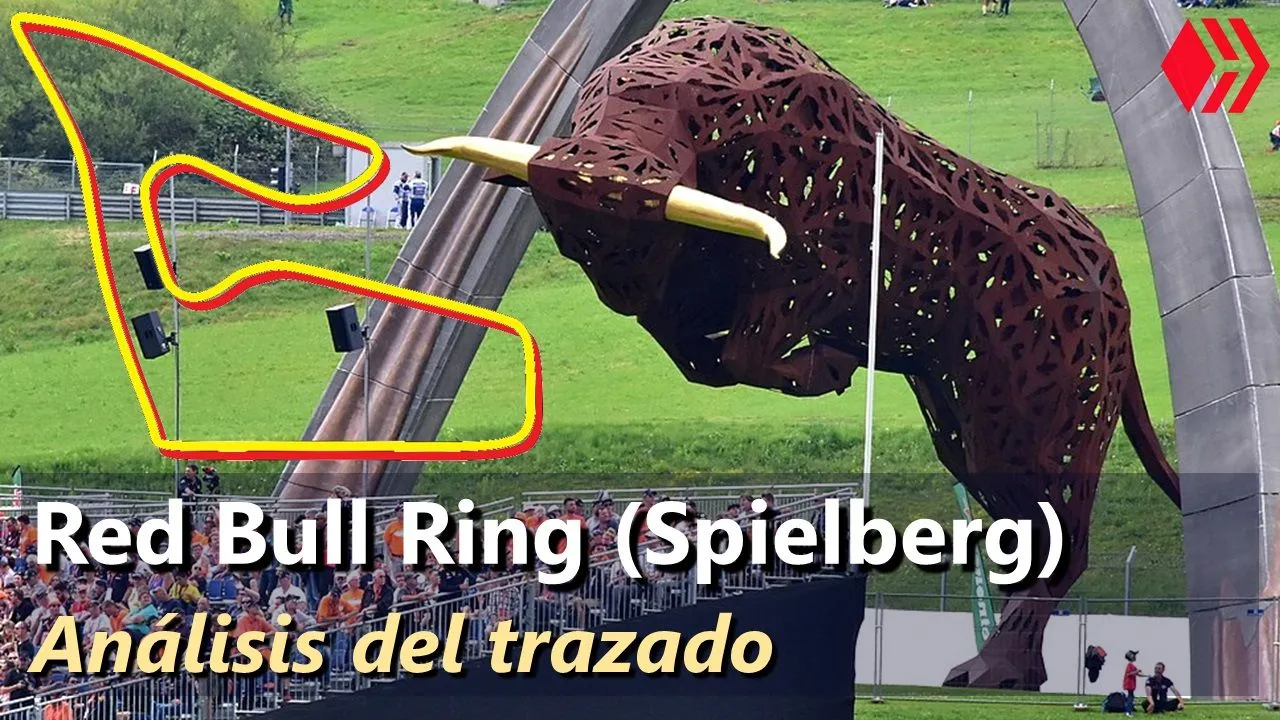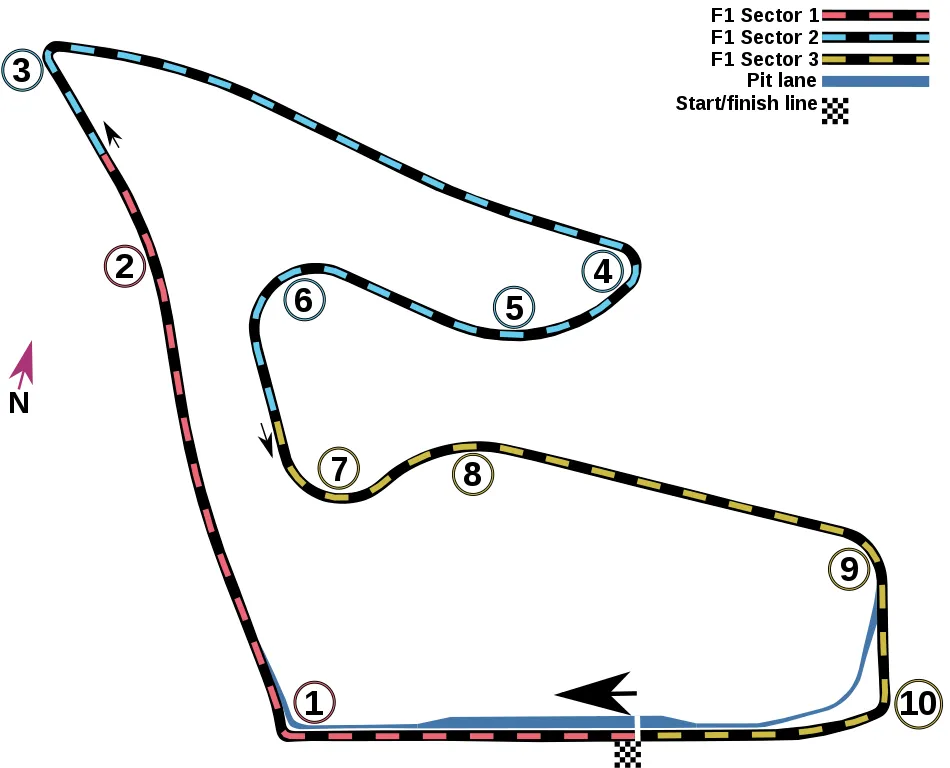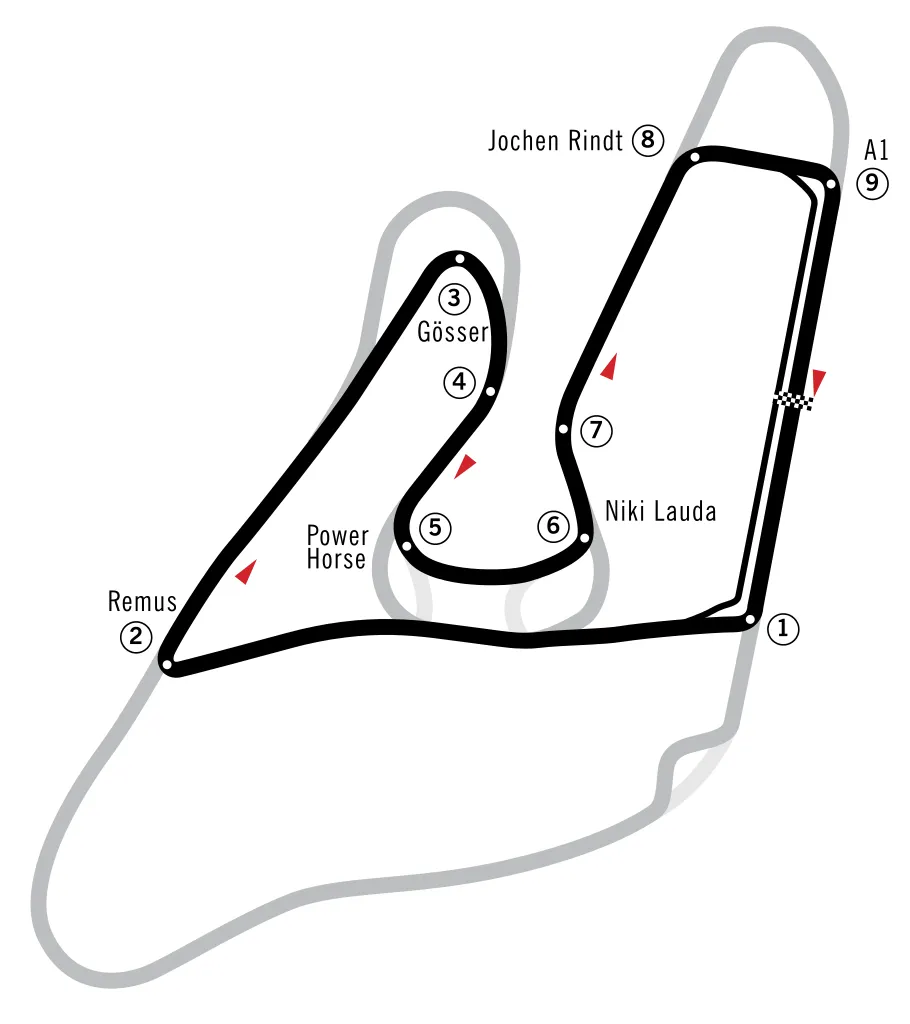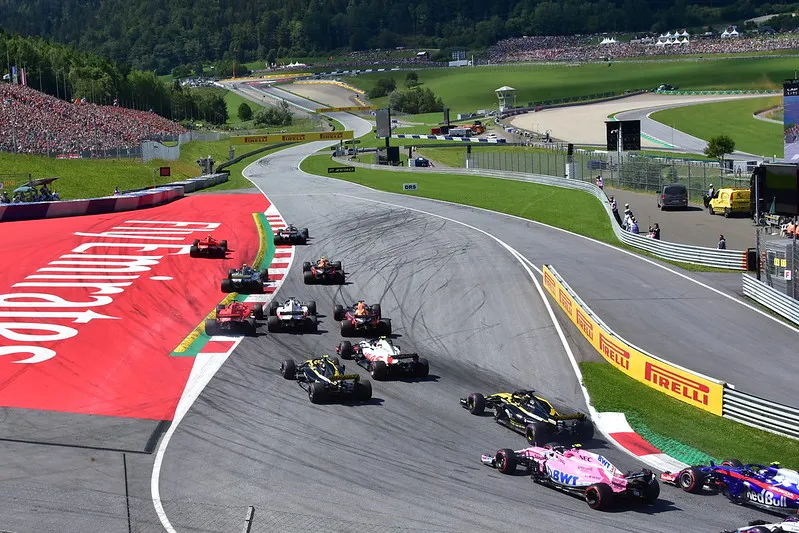Austria es un clásico de la Fórmula 1. Un circuito que ha estado presente desde 1970, aunque de manera interrumpida, ya que no se corrió en Austria del 88' al 96' y del 2004 al 2013. El circuito ubicado en la zona de Spielberg ha sido prácticamente la única sede de este GP, a excepción del circuito de Zeltweg, que fue sede en 1964.
Austria is a Formula 1 classic. A circuit that has been present since 1970, although in an interrupted way, since it was not raced in Austria from 88' to 96' and from 2004 to 2013. The circuit located in the Spielberg area has been practically the only home of this GP, with the exception of the Zeltweg circuit, which was hosted in 1964.

Este circuito es conocido no solo por sus paisajes rurales, sino por ser uno de los trazados más simples (sino el más simple) de la historia de la Fórmula 1. Consta solo de 10 curvas y 4318 metros de longitud. No es el más corto, sin embargo, tener solo 10 curvas no lo hace ser más fácil de conducir que otros circuitos, tal como veremos más adelante.
This circuit is known not only for its rural landscapes, but also for being one of the simplest (if not the simplest) tracks in the history of Formula 1. It consists of only 10 turns and 4318 meters in length. It is not the shortest, however, having only 10 turns does not make it easier to drive than other circuits, as we will see below.


La imagen anterior representa al trazado actual, sin embargo, este no es el trazado original. En 1970 se estrenó un circuito de 5911 metros. Era un circuito más largo, con curvas muy redondeadas de alta velocidad, muy típicas en circuitos de la época. Este circuito se llamaba Österreichring. En 1977 tuvo una ligera modificación, se agregó una chicane en la primera curva.
En la imagen siguiente apreciamos en gris el trazado antiguo, el cual se abandonó por motivos de seguridad y fue remodelado en 1996 por el ingeniero Hermann Tilke, renombrándose a A-1 Ring.
En la imagen siguiente apreciamos en gris el trazado antiguo, el cual se abandonó por motivos de seguridad y fue remodelado en 1996 por el ingeniero Hermann Tilke, renombrándose a A-1 Ring.
The above image represents the current layout, however, this is not the original layout. In 1970 a circuit of 5911 meters was inaugurated. It was a longer circuit, with very rounded high-speed curves, very typical for circuits of that time. This circuit was called Österreichring. In 1977 it had a slight modification, a chicane was added in the first curve.
In the following image we see in gray the old track, which was abandoned for safety reasons and was remodeled in 1996 by the engineer Hermann Tilke, renamed to A-1 Ring.
In the following image we see in gray the old track, which was abandoned for safety reasons and was remodeled in 1996 by the engineer Hermann Tilke, renamed to A-1 Ring.

En el año 2009 Red Bull compra el circuito luego del éxito cosechado en la Fórmula 1, pasándose a llamar ahora el "Red Bull Ring". Debemos tener en cuenta que es un circuito clásico, y como tal tienes características muy marcadas, a pesar de que las modificaciones de 1996 lo hicieron un poco más técnico y moderno. Tiene 3 características principales: curvas suaves y redondeadas, subidas y bajadas, y curvas de alta velocidad.
In 2009 Red Bull bought the circuit after its success in Formula 1, and it is now called the "Red Bull Ring". We must keep in mind that it is a classic circuit, and as such has very distinctive features, although the 1996 modifications made it a little more technical and modern. It has 3 main characteristics: smooth and rounded curves, ups and downs, and high speed curves.

La primera y tercera curva son las más cerradas del circuito, requieren de una frenada a fondo para poder girar. A excepción de estas dos curvas, podría decirse que el resto del circuito mantiene un poco la esencia de su trazado original. La segunda curva se traza a fondo y en subida en una larga recta, lo cual habla de la necesidad de un buen motor para este circuito.
The first and third turns are the sharpest of the circuit, requiring hard braking to be able to turn. With the exception of these two corners, it could be said that the rest of the circuit maintains the essence of its original layout. The second corner is full throttle and uphill on a long straight, which speaks to the need for a good engine for this circuit.

Entre las curvas 3 y 4 hay otra recta en donde es necesario salir con buena tracción de la curva 3 para desarrollar una buena velocidad. La curva 4 es una curva muy complicada. No lo es del todo cerrada ya que posee un radio de giro mayor a la curva 3. Se traza en bajada, por lo que los adelantamientos suelen forzarse a hacerse por fuera, pero es muy fácil terminar en la grava ante el mínimo descuido. Aunque no fue parte del trazado original, esta curva mantiene en cierta medida la esencia de los circuitos clásicos.
Between turns 3 and 4 there is another straight where it is necessary to exit turn 3 with good traction to develop a good speed. Turn 4 is a very complicated turn. It is not quite sharp as it has a larger turning radius than turn 3. It is downhill, so overtaking is usually forced to be done on the outside, but it is very easy to end up in the gravel at the slightest mistake. Although it was not part of the original layout, this curve maintains to some extent the essence of the classic circuits.

Luego de la curva 4, aparece un sector de curvas redondeadas de media-alta velocidad (curvas 6-7-8). Es complicado adelantar ya que los autos van forzados a trazar las curvas por una trayectoria que les haga salir con tracción y deben ir regulando el freno y acelerador. Sin embargo, es posible ver luchas interesantes en esta zona. Esta zona media del circuito requiere de buen agarre mecánico y cierta carga aerodinámica, para sortear las curvas con la mayor eficacia.
After turn 4, there is a sector of medium-high speed rounded turns (turns 6-7-8). It is difficult to overtake since the cars are forced to follow a trajectory that makes them exit with traction and they must regulate the brake and accelerator. However, it is possible to see interesting fights in this area. This middle zone of the circuit requires good mechanical grip and a certain aerodynamic load to negotiate the curves as efficiently as possible.

Luego de esto, se aproximan las últimas 2 curvas del circuito. Es poco usual ver en circuitos más modernos la presencia de curvas redondeadas y rápidas luego de una recta. Esto sucede en Austria con la curva 9, un curvón que se traza a gran velocidad luego de una recta ni tan corta ni tan larga. Es normal que los autos tiendan a salirse por fuera al salir de esta curva, ya que se alcanzan fuerza laterales muy altas. La curva además va en bajada, lo cual hace pensarlo dos veces antes de ejecutar un adelantamiento.
After this, the last 2 corners of the circuit are approaching. It is unusual to see in more modern circuits the presence of rounded and fast curves after a straight. This is the case in Austria with turn 9, a high speed curve after a straight that is neither too short nor too long. It is normal that cars tend to run off the outside when exiting this curve, as very high lateral forces are reached. The curve also goes downhill, which makes you think twice before executing an overtaking maneuver.

Finalmente, la curva 10 es una curva muy similar a la 9, pero no menos complicada. El auto aún se encuentra en bajada, intentando conseguir todo el agarre posible para salir a la recta principal con la mayor velocidad posible y sin salirse por el exterior. Son curvas de alta velocidad que requieren mucho agarre del auto y hacen del adelantamiento en esta zona una maniobra solo para los más atrevidos.
Finally, turn 10 is a turn very similar to turn 9, but no less complicated. The car is still going downhill, trying to get as much grip as possible to exit to the main straight with the highest possible speed and without going outside. These are high-speed corners that require a lot of grip from the car and make overtaking in this area a maneuver only for the most courageous.
En el año 2021 hemos visto una carrera donde los autos veían muchas dificultades para adelantar en aire sucio (con otro auto adelante). Los autos requieren una cierta carga aerodinámica para sortear bien los curvones de alta velocidad pero acompañado de un motor con buena potencia para las largas rectas. En definitiva, es un circuito clásico donde las manos del piloto tienen mucha importancia, para lograr adelantamientos y sacar hasta la última milésima en cada una de las curvas de su corto trazado. Lo simple de su trazado no lo hace ser el circuito más fácil del calendario.
In 2021 we have seen a race where cars found it very difficult to overtake in dirty air (with another car in front). The cars require a certain aerodynamic load to negotiate the high speed curves well, but accompanied by an engine with good power for the long straights. In short, it is a classic circuit where the driver's hands are very important to achieve overtaking and get the last thousandth of a second out of each of the curves of its short layout. The simplicity of its layout does not make it the easiest circuit on the calendar.
También te recomiendo visitar mi anterior publicación: Análisis del circuito de Paul Ricard (Francia)
I also recommend you to visit my previous post: Analysis of the Paul Ricard circuit

Deja tu comentario o comparte (reblog) esta publicación si te ha parecido interesante.
Leave a comment or share (reblog) this post if you found it interesting.
Translated to English language with the help of DeepL.com
| ¡Gracias por visitar! — Deja tu comentario 🚥🏆  |
